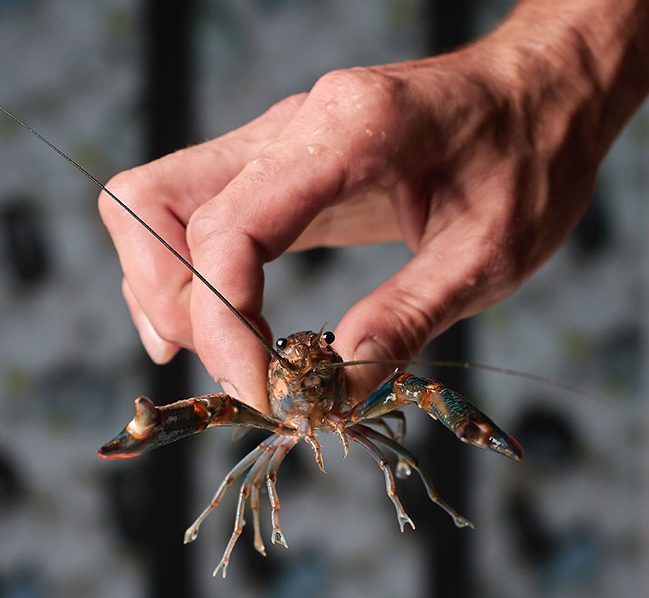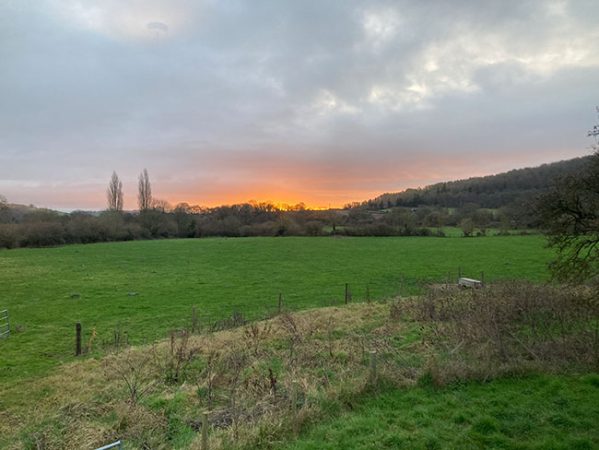
Features
Systems
The crayfish choice
Noola Redclaw poised to be the first crayfish RAS in the UK
May 30, 2022 By Bonnie Waycott
 Redclaw crayfish are an attractive species for commercial aquaculture because they can tolerate a variety of environmental conditions and have fast growth rates. Photo: Adobe Stock
Redclaw crayfish are an attractive species for commercial aquaculture because they can tolerate a variety of environmental conditions and have fast growth rates. Photo: Adobe Stock As founder of Noola Redclaw Ltd., Elena Piana is taking on a new challenge – to develop environmentally-friendly technology that will produce redclaw crayfish (Cherax quadricarinatus) year-round for high-end restaurants in the United Kingdom.
“With the biggest and best wild lobster caught in European waters going to China, high-end restaurants struggle to find a reliable source of fresh, premium crustacean,” she said. “Noola Redclaw was born to meet the growing demand for exclusive, locally-sourced premium crustaceans.”
Redclaw crayfish are freshwater species that are endemic to parts of northern Australia and Papua New Guinea. Although farming of the species is new to the UK, in other countries such as Indonesia and Australia, redclaw crayfish have proven to be well-suited to cultivation thanks to a range of physical, biological and commercial attributes.
They are robust, able to tolerate a variety of environmental conditions, have a relatively simple reproductive cycle (absence of free-living larval stages), fast growth rates and an omnivorous diet. These make them a highly attractive species for commercial aquaculture.
They also compare very well in flavour and texture with other sought-after marine crustaceans such as the native American lobster, and high prices can be paid for larger premium individuals with similar characteristics.
Ripe for RAS
Noola Redclaw Ltd. has been constructing a pilot-size RAS facility in Dorset, southwest England, since December 2021. Despite some setbacks due to the pandemic, the tanks and recirculation system have been installed. Piana and her team will now start to build know-how on husbandry techniques, system management and stress-test the proprietary design that was developed by Dutch engineering and consultancy firm, Landing Aquaculture BV.
Land-based production systems have significant advantages. These systems treat and re-use water. It can be sited closer to urban consumption areas, making it possible to lower transportation costs and deliver fresh produce. And, any adverse environmental impact can be avoided. They also ensure that focus remains squarely on the wellbeing of the species in question and operation efficiency.
“The combination of technology and location gives us the ability to produce fresh crayfish all year round and provide our customers with a steady supply,” said Piana. “From an environmental standpoint, our location allows us to minimise any risk of disease introduction into the system, as well as the risk of escapes. This is crucial not only to the preservation of local ecosystems but also to maintaining good relationships with local communities who are all deeply connected with local, natural amenities.”
The biggest challenge for Noola Redclaw is that farming redclaw crayfish intensively in tanks has never been done before. But hopes are high that strong collaboration between companies, academia private sectors and specialists will enable Piana and her team to explore different options to overcome the challenges.
“We are in contact with a variety of firms, including Pontus Research, a company that specialises in the development of new aquatic feed formulation,” said Piana. “We are also planning to focus heavily on genetics to improve the performance of our breed, and southwest England is home to a vibrant sector of companies that specialise in energy management, heat recovery and indoor controlled systems, all of which we are working on.”

An evening scenic shot of Noola Redclaw’s facility location in Dorset, England. PhotO: Elena Paina/Noola Redclaw Ltd.
Community ties
Dorset puts Noola Redclaw close to world-class science, a unified supply chain and a dynamic business environment.
Southwest England has a strong and growing network of more than 200 innovative agri-tech companies working with industry, leading academics and R&D institutions. Dorset is also home to the Centre for Environment, Fisheries and Aquaculture Sciences (CEFAS), the leading global body for disease research in aquaculture.
“Dorset is extremely open to new things, people and business,” said Piana. “The local council is very well organised and professional with a branch that is dedicated to working with companies that are relocating to the region. Not only have council representatives supported the development of Noola Redclaw by helping us find a site and the right skilled workers, but they are also very well connected to other bodies supporting business development in the UK. The result is a very well-coordinated network that supports new companies all the way through and for as long as needed.”
Working with the local community to raise awareness of crayfish farming and RAS systems will be a key task as Noola Redclaw develops. Many people in the community are well aware of the issue with crayfish as an invasive species and how ecosystems have been damaged as a result, says Piana.
One example in the UK is the signature crayfish (Pacifastacus leniusculus), which was introduced from the US in the 1970s to be reared in farms for restaurants and food shops.
However, it soon became established in the wild, eroding river banks through extensive burrowing.
Today, the UK has stringent regulations based on scientific risk assessments that decide whether a species can be farmed outside its original habitat. These regulations take into account the issues that can be caused by invasive species like crayfish and any disease that they may be carrying.
Only facilities that have undergone careful screening can move species across countries. Piana says that the RAS technology utilised by Noola Redclaw is an example of how modern technology enables sustainable development.
“When people come across Noola Redclaw and realise that we are farming crayfish, the first thing they ask us is how we plan to prevent potential escapees into the environment,” said Piana. “After an initial awkward moment when we explain to them that we use RAS technology and that the species is tropical and unlikely to survive the local climate, people become relieved and excited at the prospect of having local crayfish all year round. Restaurants are also particularly thrilled at the idea of being able to offer something that differentiates them from competition and attracts consumer interest.”
High hopes
Going forward, Piana and her team will be concentrating on growing their first few batches of redclaw crayfish and working closely with their customers to deliver the quality and service they are looking for.
There are also a few strategic moves in the works. They have identified other locations in the UK where they can use waste heat to create the right environment and increase the sustainability of their operations. With the threat of climate change becoming ever more real, new technology will be key to producing food locally and sustainably.
“Crayfish are extremely robust, able to tolerate ammonia spikes, wide temperature fluctuations and they can thrive on a plant-based diet, all of which makes the farming of the species highly sustainable,” said Piana. “At a time when the energy sector is in crisis, the key to our success has very quickly shifted in the last few months. Striking the right partnerships will allow Noola Redclaw to future-proof its business model in light of the looming climate change crises.”
Print this page